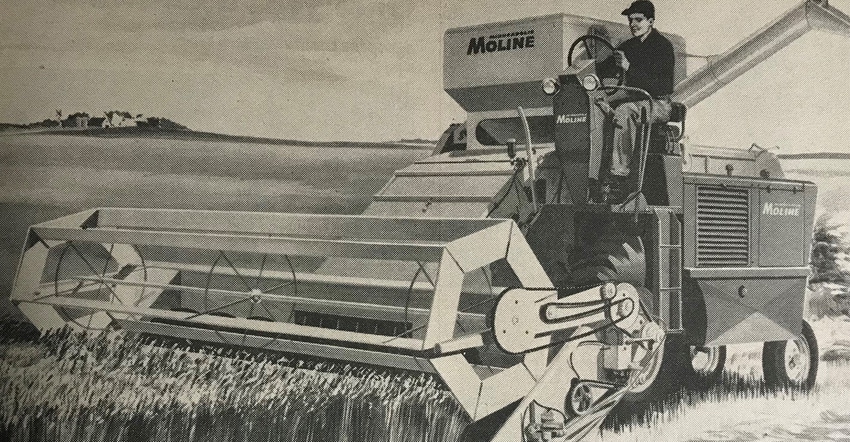May 11, 2020

It’s wheat harvest month in Kansas, and that makes it a good time to think about how far Kansas farmers have come in terms of the equipment used to complete the harvest.
Back in 1960, farmers were looking at newer, bigger more powerful machinery to make harvest quicker and easier. One such machine was the “self-propelled” combine like the new G12 from Moline.
The new machine boasted an exclusive new 4-foot-wide straw rack. The thresher body was a full 4 feet wide from end to end, making it 10 to 18 inches wider than other 14-foot combines.
Moline boasted its new models could “breeze through 70 acres” of grain per day.
50 years ago
The Fort Hays branch of the Kansas State University started an accelerated program for studying the value of feeding wheat to livestock. Worldwide increases of bread wheat, wheat surpluses in the United States and depressed prices led to the conclusion that using wheat as livestock feed might improve the market.
The five-year study was designed to determine which varieties might have the best feed qualities with an eye to using high-yielding varieties that did not have high qualities for making bread to feed cattle.
45 years ago
After two successive years of low protein in the wheat crop, millers and bakers were hoping for a high-protein harvest in 1975. With hard red winter wheat being the primary wheat for making break, millers were being forced to pay a hefty premium for higher protein.
In the months before the expected start of the 1975, the premium for 14% protein was as high as 54 cents a bushel in Kansas City.
20 years ago
Acronyms are part of life in agriculture, but some of them have gained new meaning with historic occurrences. Back in June of 2000 — three years before the cow that killed Christmas — when you talked about cattle (more specifically bulls) and BSE, the acronym meant “Breeding Soundness Examination.”
The June edition of Kansas Farmer that year had an article outlining what to watch for under the heading “BSE basics.”
Goerzen is executive director of the Old Cowtown Museum in Wichita.
About the Author(s)
You May Also Like




